We examine several common repairs needed on BMW X3 and X5 models
Amidst fears of Y2K and while trying to party like it was 1999, BMW was designing and building their first four wheel drive sport utility vehicle. The BMW X5 with chassis code E53 landed for the 2000 model year amid a flurry of excitement. There are many stories surrounding the design process for the luxury off-road vehicle, from a two hour plane trip during which Frank Stephenson sketched out the X5 design from scratch, to the six week lead time to have the final design and modeling completed.
In the end, as with any new vehicle release, it was the culmination of years of work by many designers and engineers. Chris Bangle, who had recently been named Chief of Design for BMW Group, oversaw the X5 project from DesignWorks, BMW’s innovation studio in Los Angeles. Bangle was a polarizing figure during his tenure as Chief Designer, but his influence and philosophy can still be seen in the designs coming from the Bavarian auto maker.
The goal was to create a more road- and track-friendly version of the traditional sport utility vehicle. This marked a departure from the rest of the vehicles in the sport utility market, which were mainly highly capable off road vehicles that tended to be cumbersome and oversized for daily driving. The resulting X5 was dubbed a Sports Activity Vehicle, or SAV, by BMW. Initial reviews were positive, but there was some criticism around the lack of off road capability. Consumers had the final say and sales figures showed that the X5 was a success.
BMW benefited from the six years that they owned the Rover Group (from 1994 – 2000). They were able to draw from the Land Rover platform and combine these elements into the BMW design DNA. This juxtaposition can be seen in the Rover-inspired two part rear tailgate paired with the signature Beemer kidney shaped grilles.
The X5 is now in its fourth generation and has spawned a complete line of vehicles for BMW. The next member of the X-series family was the X5’s younger sibling, the X3. This smaller and cheaper Sports Activity Vehicle was released in 2003 and was based on the 3-series platform. The following vehicle studies highlight some of the main features and common failure points of X5 and X3 vehicles.
Cooling Systems
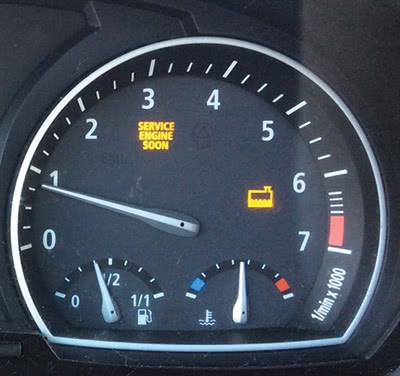
From coolant leaks on the garage floor, overheating on the road, or a Low Coolant light displayed on the dash, the cooling system constitutes the source of many of the repairs that X3 and X5 models are brought into the shop for. Here are a few things to keep in mind when servicing X-series cooling systems.
The phrase ‘less is more’ does not apply to coolant repairs on BMWs. Performing the minimum repairs to a BMW cooling system will usually result in multiple callbacks to the owner to approve additional repairs, or the vehicle returning back to the shop with issues after the first visit. Both of these undesirable scenarios can be avoided by recommending complete repairs that include all associated parts, for example: radiator hoses along with a radiator replacement or an expansion tank cap when replacing the expansion tank.
Reusing higher mileage plastic components leaves a shop open for costly comebacks. Performing complete repairs may not always be possible due to parts availability or custumer finances, but it is the best policy to follow whenever possible.
One specific example of this is the coolant temp sensor located in the lower radiator hose on many of the M54 engines. The o-ring on this sensor will inevitably start leaking if the old part is transferred to the new hose. Any time the lower hose is being replaced on vehicles equipped with this sensor, a new coolant temp sensor should be quoted in the original estimate and installed with the repair. Many service writers do not have the hands-on experience needed to anticipate these types of issues, so this responsibility falls on the technician to identify related hoses or other parts that should be replaced along with the main failure component. Strong communication between the front office and the shop floor is required to prevent overlooked or incorrect parts.
One of the more involved cooling related repairs is the coolant pipes beneath the intake manifold on the M54 3.0L engine. These two plastic pipes are prime locations for leaks on older or higher mileage vehicles. The ends of the pipes will crack and break off as the plastic deteriorates.
Replacing these pipes requires the removal of the intake manifold. This is a rather straightforward job, but use care to not lose any of the nuts that secure the manifold, as they are not a usual metric thread pitch and can be difficult to find replacements for. Be sure to disconnect the battery as the starter cables are well within range of a ratchet handle or wrench. This repair is a good example of replacing related parts as well. The quick connect coolant hoses that attach to each of the plastic pipes should also be replaced to prevent future leaks.
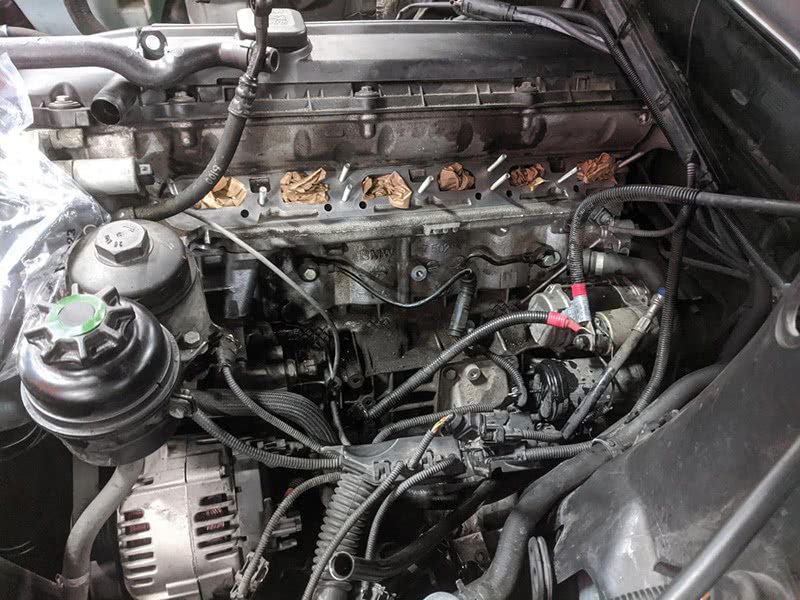
Driveline
The driveline for the X-series Sport Activity Vehicles has been a key component to their success and another place where Land Rover influences have been blended with BMW design. The original X5 broke from the traditional body on frame design of sport utility vehicles by using unibody construction.
The first version of the 4-wheel drive system had predetermined amounts of torque going to each axle; with the rear wheels getting more torque to stay true to the rear wheel drive BMW feel.
Later, when the xDrive system was introduced, the amount of torque being delivered to each axle could be precisely controlled based on a variety of input sensors as well as road and environmental conditions. The following diagnosis is a good example of dealing with a driveline issue on an X-series vehicle.
A 2007 X3 was brought into the shop with a complaint of shuddering at speeds of 50 mph and higher and no reverse engagement. There were multiple warning lamps displayed as well. A road test was performed to verify the client’s concerns. There was indeed no reverse engagement and a strong vibration could be felt throughout the whole vehicle at 50 miles per hour and above.
At this point it was unknown if the two issues were related, but the technician knew how important it was to keep an open mind and not form any opinions, especially during the early stages of a diagnosis. All the data needed to be collected and visual inspections performed without any presumptions.
A full scan of all modules brought back 13 total faults, which is on the low side for a BMW product. The two faults stored in the transmission control module, or EGS, were of the most interest: a 56B8 Gear R incorrect ratio fault and a 578E Gearbox: Oil Wear.
Anyone who regularly scans BMW vehicles is likely familiar with the 578E Gearbox Oil Wear fault as well as its companion fault 54C6 VTG Oil Wear for the transfer case fluid. Both of these faults are time based and use software to determine when the fluid has surpassed its life expectancy. Neither of these faults will illuminate a warning light so they should not be used as part of a diagnosis other than to recommend maintenance. The Gearbox Oil Wear fault is slightly contradictory though, since most BMW transmissions use lifetime fluid. Best practice on lifetime fill transmissions is to change the fluid only when required for a repair.
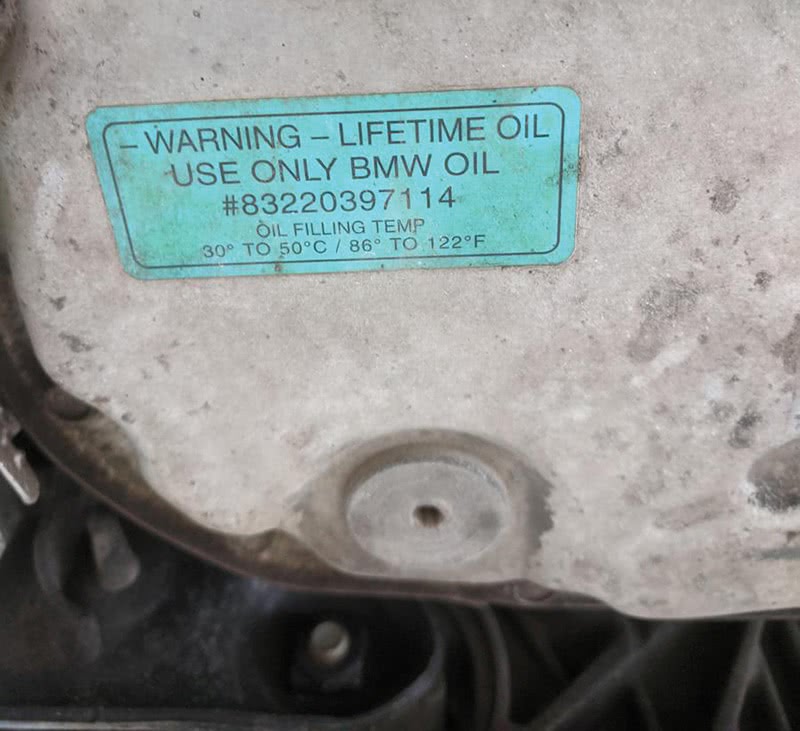
The initial hunch was that transmission had internal damage and would need to be replaced, but that turned out to be quite premature. While reviewing service information, the technician discovered a technical bulletin that described the no reverse engagement and the incorrect gear ratio fault code.
The BMW service bulletin stated there was a gear selector valve in the valve body that can break and cause multiple fault codes and loss of gears. The gear selector has been made available separate from the valve body assembly, which is good news since the valve body or Mechatronic is an expensive component.
A complete visual inspection of the suspension and drivetrain uncovered the cause of the higher speed vibration. The technician found that the flex disc coupler and u-joints on the rear drive shaft were very loose with excessive play. The rear driveshaft assembly would need to be replaced.

The client was called and the recommended repairs were explained along with the disclaimer that there could be more transmission damage found once the pan came off. The owner approved only the pan removal to inspect the gear selector valve. He also acknowledged that the high speed shudder had been going on before the loss of reverse gear, confirming that the two symptoms were unrelated.
The transmission pan was easily removed and some of the fluid was collected for analysis. Inspection of the gear selector confirmed it was broken just as described in the BMW service bulletin. Despite the high mileage on this vehicle (173K miles) the fluid looked normal; the pan magnet was free of any substantial debris, as well as the filter.
Unfortunately on this vehicle the customer opted to try the repairs himself, so the transmission pan was reinstalled, fluid added and the SAV was pushed out of the shop. After that first visit this specific X3 was not brought back to the shop, so its final fate was left with a big question mark.
Diesel
In 2009, the E70 X5 xDrive35d introduced a diesel powerplant to the U.S. market. Diesel engines had been available on previous X5 models, but only in Europe. The introduction of the turbocharged inline 6 cylinder engine also brought with it the addition of all the required emission controls required by EPA regulations. These emission control devices can be tricky to diagnose for technicians who are used to dealing primarily with gasoline engines. Additional time reading through service information, technical bulletins and campaigns is required to properly repair these vehicles. Here is an example diagnosis on a 2011 X5 with the 3.0L turbo diesel.
As with most diagnostics, the first step was to perform a health scan of all the modules on the vehicle. The scan was done with BMW’s diagnostic software, ISTA, and the results listed five faults in the DDE or Digital Diesel Electronics control module. Two of the faults were for glow plug circuits, and one was for the fuel filter heating control. There was also a fault stored for the diesel particulate filter and one more for an engine switch-off time fault. Only two of the five codes were currently active: one of the glow plug faults and the particulate filter fault.
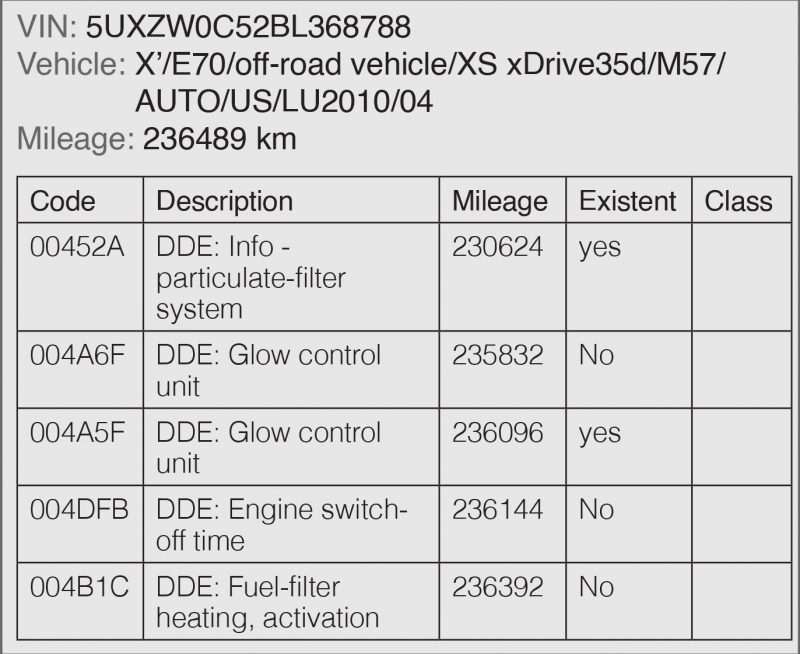
After reviewing freeze frame data, code set criteria, and searching though service information for technical bulletins a plan of attack was formulated. There was a service bulletin related to the 4B1C fuel filter heating activation fault. The bulletin stated that the fault “is generated due to a software error in the diagnostics of the DDE. Do not replace any parts. This fault will not turn on the Service Engine Soon lamp. Continue with diagnosis of other faults if they are stored in the DDE. The software error will be corrected in a later version of ISTA.â€
The 4DFB Engine Switch-off time fault also had a technical bulletin explaining how to proceed. This fault was is a logic error from the instrument cluster, and the first step for this code was to clear it from memory, let the vehicle enter sleep mode, and then see if it returns.
The fault list had now been whittled down to three codes. The ISTA Test Plans for the remaining faults were performed and the results were conclusive; based on the test plan data the glow plug control module and all six glow plugs needed to be replaced. The particulate filter test showed that the ash load was excessive and the particulate filter had reached the minimum limit threshold and would need to be replaced.
The repairs were carried out, making note of two important details that were highlighted in the repair procedures. There was a service note attached to the glow code faults to remove the glow plugs with the engine at operating temperature to avoid possible damage to the cylinder head. Removing the plugs at operating temperatures helps to loosen carbon buildup between the plugs and the bores of the cylinder head. The particulate filter repair procedure instructed that, after the filter was replaced, the Diesel Particulate Filter: Register Exchange service function needed to be carried out using the ISTA software.
Using BMW software is very helpful when dealing with diesel engines and any of the later model gasoline engines as well. The final step on this X5 was to top off the diesel exhaust fluid in both of the underhood filler necks.
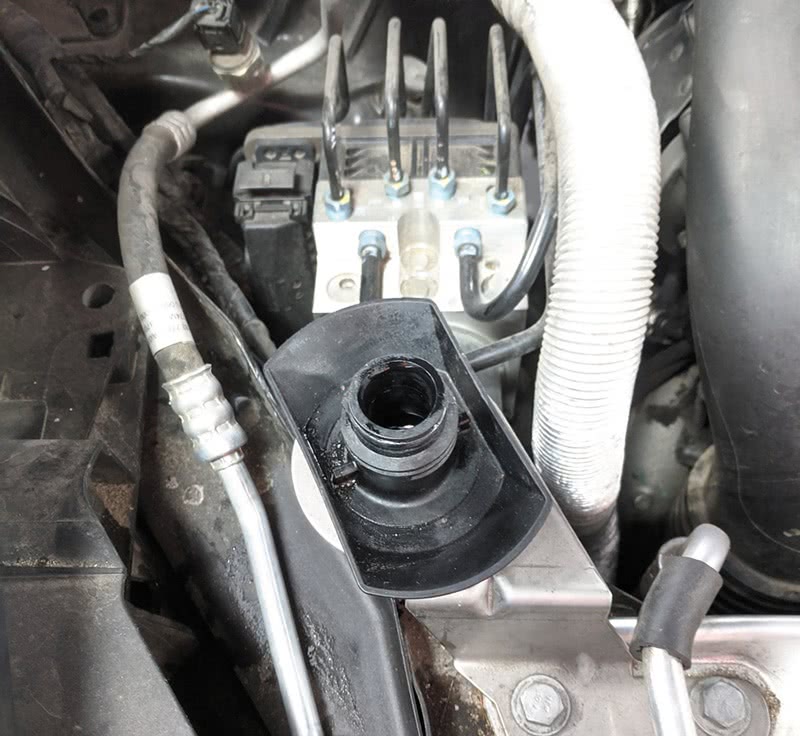
In part 2 of the X-series we will look at some of the newer technology and newer models that BMW refers to as Sport Activity Coupes, or SACs.
By Jordan Hill

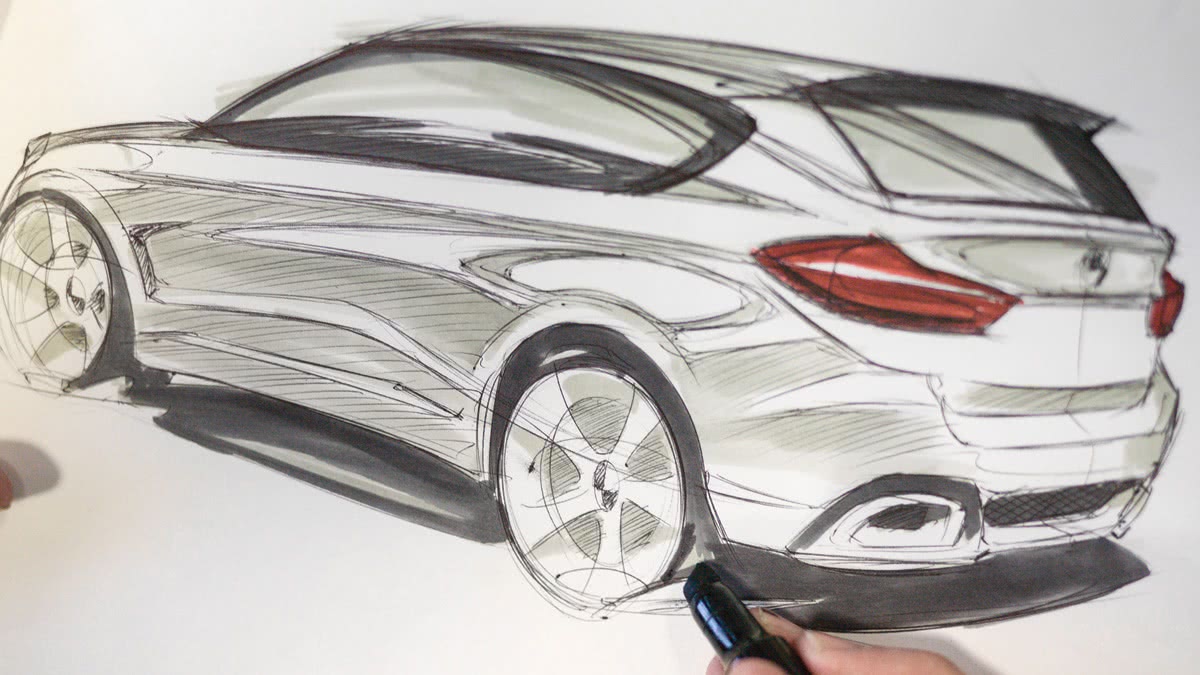


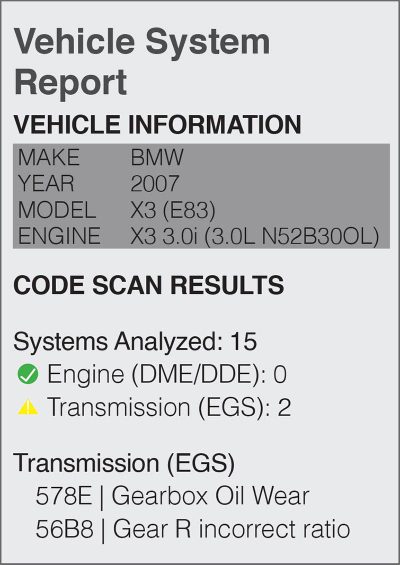
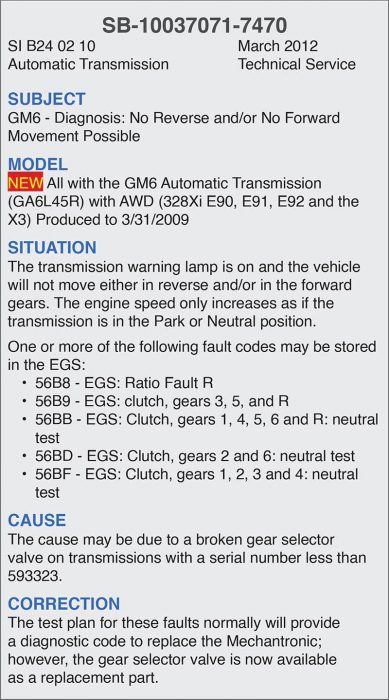




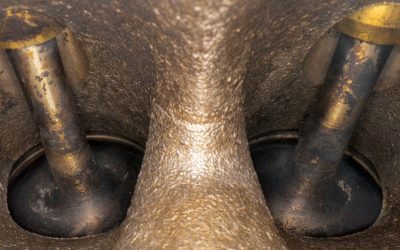
0 Comments